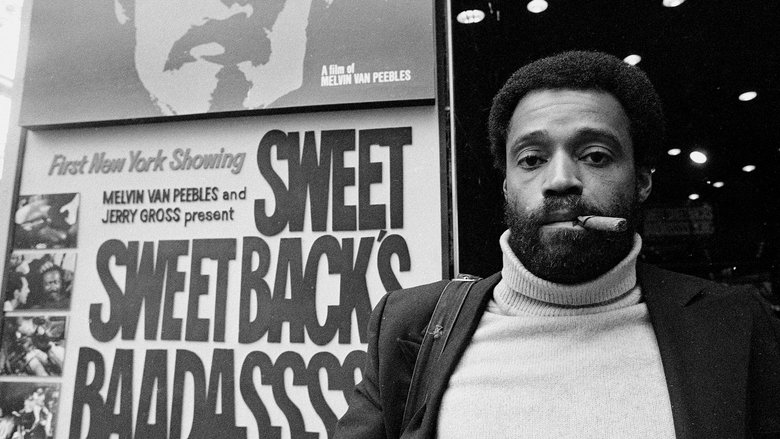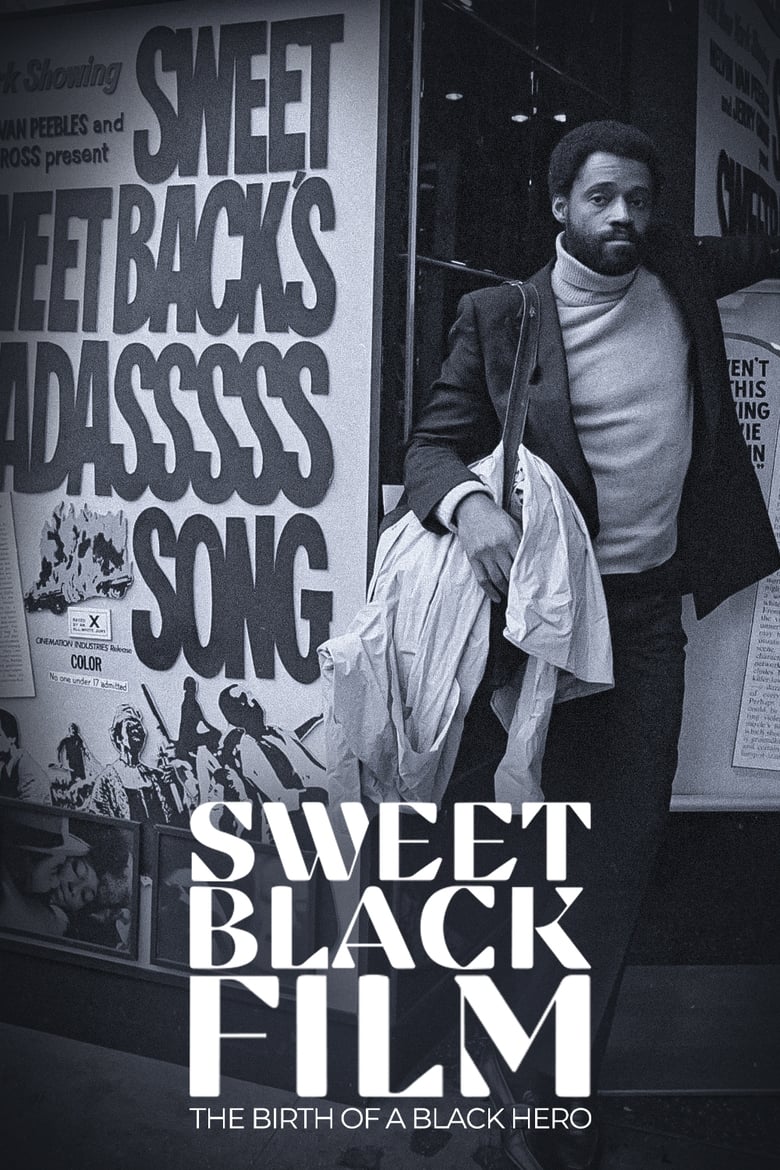

Sweet Black Film: The Birth of the Black Hero in Hollywood
Genres
Overview
In 1971, director Melvin Van Peebles turned the figure of the black hero in US cinema upside down with Sweet Sweetback's Baadasssss Song: the story of the making of a seminal movie that initiated the Blaxploitation movement, a short-lived but highly influential sub-genre in the years that followed.
Details
Budget
$0
Revenue
$0
Runtime
53 min
Release Date
2022-03-16
Status
Released
Original Language
French
Vote Count
3
Vote Average
8
Sandra Nkake
Self - Narrator (voice)
Melvin Van Peebles
Self
Max Van Peebles
Self
Marguerite Van Peebles
Self
Mike Sargent
Self
Mario Van Peebles
Self
Reginald Hudlin
Self
Sandra Rush
Self
Donna Dubrow
Self
Bill Duke
Self
Philip Hart
Self
Mandela Van Peebles
Self
6.7
Caligari: When Horror Came to Cinema
On February 26, 1920, Robert Wiene's world-famous film The Cabinet of Dr. Caligari premiered at the Marmorhaus in Berlin. To this day, it is considered a manifesto of German expressionism; a legend of cinema and a key work to understand the nature of the Weimar Republic and the constant political turmoil in which a divided society lived after the end of the First World War.
2014-02-12 | de
7.1
The Arrival of a Train at La Ciotat
A group of people are standing along the platform of a railway station in La Ciotat, waiting for a train. One is seen coming, at some distance, and eventually stops at the platform. Doors of the railway-cars open and attendants help passengers off and on. Popular legend has it that, when this film was shown, the first-night audience fled the café in terror, fearing being run over by the "approaching" train. This legend has since been identified as promotional embellishment, though there is evidence to suggest that people were astounded at the capabilities of the Lumières' cinématographe.
1896-06-30 | fr
5.1
Hollywood Rated 'R'
A roller-coaster ride through the history of American exploitation films, ranging from Roger Corman's sci-fi and horror monster movies, 1960s beach movies, H.G. Lewis' gore-fests, William Castle's schlocky theatrical gimmicks, to 1970s blaxploitation, pre-"Deep Throat" sex tease films, Russ Meyer's bosom-heavy masterpieces, etc, etc. Over 25 interviews of the greatest purveyors of weird films of all kind from 1940 to 1975. Illustrated with dozens of films clips, trailers, extra footage, etc. This documentary as a shorter companion piece focusing on exploitation king David F. Friedman.
1997-06-19 | en
6.5
In Search of Tomorrow
A nostalgic journey through ’80s Sci-Fi-films, exploring their impact and relevance today, told by the artists who made them and by those who were inspired to turn their visions into reality.
2022-02-19 | en
0.0
Mario Camus según el cine
A look at the life and work of Spanish filmmaker Mario Camus (1935-2021).
2022-03-19 | es
0.0
Omnibus: François Truffaut
1973-12-02 | en
6.7
Counter Shot: Departure of the Filmmakers
2008-02-11 | de
7.4
Woodlands Dark and Days Bewitched: A History of Folk Horror
An exploration of the cinematic history of the folk horror, from its beginnings in the UK in the late sixties; through its proliferation on British television in the seventies and its many manifestations, culturally specific, in other countries; to its resurgence in the last decade.
2021-09-09 | en
8.0
Les Charlots en folie
Documentary on Les Charlots, known as The Crazy Boys in the English-speaking world, a group of French musicians, singers, comedians and film actors who were popular in the 1960s, 1970s, and early 1980s.
2024-08-27 | fr
5.8
Room 999
In 1982, Wim Wenders asked 16 of his fellow directors to speak on the future of cinema, resulting in the film Room 666. Now, 40 years later, in Cannes, director Lubna Playoust asks Wim Wenders himself and a new generation of filmmakers (James Gray, Rebecca Zlotowski, Claire Denis, Olivier Assayas, Nadav Lapid, Asghar Farhadi, Alice Rohrwacher and more) the same question: “is cinema a language about to get lost, an art about to die?”
2023-10-05 | fr
0.0
The Simón's Jigsaw: A Trip to the Universe of Juan Piquer Simón
A journey through the work of Spanish filmmaker Juan Piquer Simón (1935-2011).
2015-10-17 | es
7.7
The 'Frankenstein' Files: How Hollywood Made a Monster
The history of Frankenstein's journey from novel to stage to screen to icon.
2002-11-01 | en
6.0
Clawing! A Journey Through the Spanish Horror
In the late sixties, Spanish cinema began to produce a huge amount of horror genre films: international markets were opened, the production was continuous, a small star-system was created, as well as a solid group of specialized directors. Although foreign trends were imitated, Spanish horror offered a particular approach to sex, blood and violence. It was an extremely unusual artistic movement in Franco's Spain.
2014-06-20 | es
7.2
Comrades in Dreams
Four lives that could not be more different and a single passion that unites them: the unconditional love for their cinemas, somewhere at the end of the world. Comrades in Dreams brings together six cinema makers from North Korea, America, India and Africa and follows their efforts to make their audiences dream every night.
2006-10-15 | de
7.5
Boundless
As Hong Kong's foremost filmmaker, Johnnie To himself becomes the protagonist of this painstaking documentary exploring him and his Boundless world of film. A film student from Beijing and avid Johnnie To fan, Ferris Lin boldly approached To with a proposal to document the master director for his graduation thesis. To agreed immediately and Lin's camera closely followed him for over two years, capturing the man behind the movies and the myths. The result is Boundless, a candid profile of one of Hong Kong's greatest directors and a heartfelt love letter to Hong Kong cinema.
2013-11-02 | cn
7.0
The Omen Legacy
The true stories that spawned the eerie tale of Damien, a small boy with an angelic face, whose very name still conjures up thoughts of Satan. This documentary shares spine-tingling information about the the all-too-memorable flick that has terrorized film audiences since 1976.
2001-10-30 | en
7.0
Maria and the Lost Movie
The pianist Miguel Ángel Lozano embarks on a personal and artistic journey with the purpose of reconstructing the life of his grandmother, Maria Forteza (1910-60), singer and pioneer of Spanish sound films.
2023-07-28 | ca
7.2
Gena Rowlands: A Life on Film
An intimate portrait of the superb actress Gena Rowlands, icon of independent cinema. Together with her husband, legendary director John Cassavetes (1929-89), she lived an unusual life beyond the dream factory, a life in which reality and fiction were so perfectly intertwined that it made possible films that still today seem incredibly real.
2019-06-05 | de
3.0
Locations: Looking for Rusty James
A personal meditation on Rumble Fish, the legendary film directed by Francis Ford Coppola in 1983; the city of Tulsa, Oklahoma, USA, where it was shot; and its impact on the life of several people from Chile, Argentina and Uruguay related to film industry.
2013-08-30 | es
8.0
D'Emmanuelle à Emmanuelle
« Emmanuelle » was released 50 years ago. Its main character, played by the young Sylvia Kristel, delve freely into her sexuality, without taboo. This bold movie became one of the great success of french cinema in the 70s, and Emmanuelle became the face of sexual liberation. Through the gaze of a woman, the character is back on the screen in 2024. This new Emmanuelle, written by Audrey Diwan, go in quest of a lost pleasure.
2024-09-24 | fr